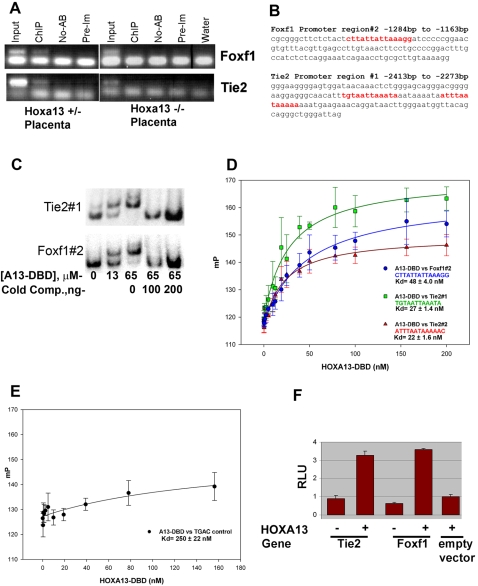Figure 10. HOXA13 binds to gene-regulatory regions in Tie2 and Foxf1 to facilitate gene expression.
(A). Left panel: Chromatin immunoprecipitation (ChIP) of heterozygous control placental chromatin using a HOXA13 antibody identified DNA sequences present in the Tie2 and Foxf1 promoter regions and confirms that HOXA13 associates with these sequences in vivo. Right panel: Parallel assays using Hoxa13 homozygous mutant placentas failed to enrich for the same DNA regions, suggesting that HOXA13's DNA binding function, which is absent in the homozygous mutant protein, is necessary for in vivo association at the Tie2 and Foxf1 loci. Input indicates positive control confirming the presence of the Tie2 and Foxf1 DNA elements in both heterozygous and homozygous mutant chromatin samples. ChIP = + HOXA13 antibody; No-AB = no antibody negative control; Pre-Im = IgG control rabbit pre-immune sera; Water = no DNA PCR control (B). Sequence analysis revealed HOXA13 binding sites (red text) in the ChIP-positive PCR amplification products for both Foxf1 and Tie2. (C) EMSA analysis of the ChIP-positive PCR amplification products confirms HOXA13 can bind these sites in a concentration-dependent manner. A13-DBD = HOXA13 DNA binding domain peptide; Cold Comp. = the Tie2 or Foxf1 binding sites lacking radioactive labeling. (D) The HOXA13 DNA binding domain binds the DNA sequences present in the ChIP-positive region with high affinity exhibiting a Kd of 48±4 nM for the Foxf1 region and 27±1.4 nM and 22±1.6 nM for the two sequences present in Tie2. Error bars denote the standard error for the averaged millipolarization values at each HOXA13-DBD concentration. The DNA sequences of the Tie2 or Foxf1 promoter regions used in the assay are denoted by the color text. (E) Conversion of the Tie2 or Foxf1 binding sites to the sequence TGAC ablates the affinity of the HOXA13 DNA binding domain for these gene-specific promoter sequences. Error bars denote the standard error for the averaged millipolarization values at each HOXA13-DBD concentration. (F) In vitro assessment of the 140 bp Tie2 and 121 bp Foxf1 ChIP fragments confirms that HOXA13 can use these minimal sites to direct gene expression, confirming their capacity to function as gene-regulatory elements. Values represent average detected luciferase activity after normalization for transfection with a Renilla luciferase reporter±standard error.

